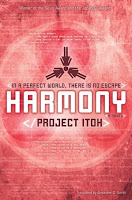 Creator: Rumiko Takahashi
Creator: Rumiko Takahashi
U.S. publisher: Viz Media
ISBN: 9781591163367
Released: July 2004
Original run: 1984-1994 (Shōnen Sunday)
Awards: Seiun Award
I came to read Mermaid Saga as part of the April 2011 Manga Moveable Feast focusing on the series’ creator Rumiko Takahashi. I’m ashamed to admit it, but before the Feast I had never read any of Takahashi’s works except for Ranma 1/2, which I adore. Mermaid Saga is one of Takahashi’s shortest series and she completed it between 1984 and 1994. Also in 1994, Viz Media began publishing the entire work in three volumes: Mermaid Forest, Mermaid Scar, and Mermaid’s Gaze. In 2004, Viz re-released the series in a smaller sized second edition under the title Mermaid Saga, this time in four volumes. Mermaid Saga, Volume 1 contains all but the last chapter of Mermaid Forest. Once again, the Manga Moveable Feast has given me the excuse to read something I’ve been meaning to get around to for quite some time.
Mermaid Saga is told in a sequence of related short stories. The first volume collects “A Mermaid Never Smiles,” “The Village of the Fighting Fish,” and frustratingly only the first half of “Mermaid Forest.” There is a legend that eating the flesh of a mermaid will bring a human eternal youth and longevity. However, it is just as likely, if not more so, that the person will be poisoned by the flesh, either killing them or transforming them into a monster. Yuta, who has eaten mermaid flesh, is arguably one of the lucky ones. Although immortal, he is tired of the suffering and pain of dying only to return to a life where he is lonely and ostracized. And so he searches for the mermaids, believing that they are the only ones who know how to return his body to normal, allowing him live his life, grow old, and die.
I was happy to find that Takahashi executes dark and creepy in Mermaid Saga just as well as she handles comedic and absurd in Ranma 1/2. Her mermaids are not gentle and kind supernatural beings. Instead, they are vicious and selfish creatures, not only towards humans but towards their own kind as well. (Not unlike humans, actually.) They are also somewhat of a mystery—other than the fact that their flesh and blood has strange and powerful properties when consumed, very little is actually known about the mermaids.Still, whether out of obsession or desperation, mortals pursue the mermaids and immortality. But without complete knowledge or understanding of the circumstances, this can lead to severe and dire consequences for all involved. Unfortunately, because the details regarding mermaids are only slowly revealed, it sometimes feels like Takahashi is making them up as needed for the story rather than having a coherent and consistent vision to begin with. But even if that is the case, the mood remains the same throughout Mermaid Saga and the stories are effectively disconcerting.
I really enjoyed the first volume of Mermaid Saga. My favorite story, despite some over the top dialogue, was “The Village of the Fighting Fish.” The chemistry between Yuta and Rin is excellent and the development of their relationship over such a short period of time is completely believable. While I find Yuta to be the most interesting character at this point, they all have distinctive personalities and well developed backgrounds. This is true for most of the minor and secondary characters as well. I’ve come to expect dynamic and exciting action sequences and fight scenes from Takahashi and Mermaid Saga doesn’t disappoint in that respect either. The art is skillfully done: the backgrounds and landscapes are wonderfully detailed, water and spray look wet, the mermaids are terrifying and beautiful in turn, and the panel and page layouts show effective variation. Overall, I feel that Mermaid Saga is off to an excellent start with engaging stories, art, and characters. I look forward to reading the rest of the series—I may have found a new favorite Takahashi.


